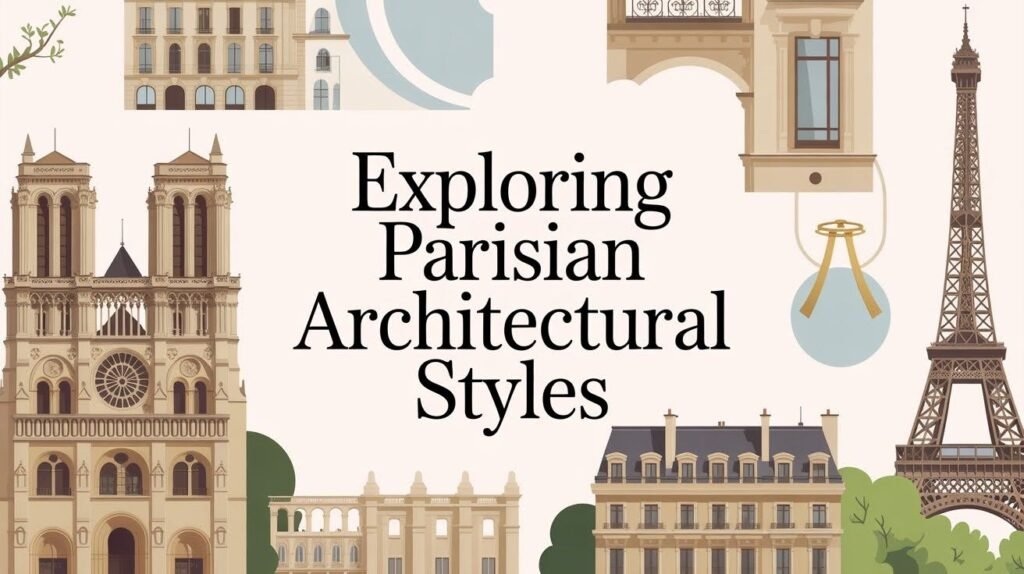Paris holds some of the world’s most beautiful buildings. From Gothic cathedrals to modern glass towers, the city tells stories through stone and steel.
Walking through Paris can feel overwhelming. Which buildings matter most? What should you look for? How do you separate tourist traps from true gems?
This guide solves that problem. Explore:
- The must-see architectural landmarks
- Different building styles and their history
- Hidden spots locals love
- Practical tips for your visit
I’ve spent years exploring Paris architecture. I’ve studied with local historians and walked every arrondissement. My goal is simple: help you see Paris like an expert.
Whether you’re planning your first trip or your tenth, this guide gives you the knowledge to truly appreciate Paris’s architectural treasures. No fluff. Just what you need to know.
The Roots of Parisian Architecture: Roman and Early Medieval Influences
Paris wasn’t always the city we know today. Before the Gothic spires and grand boulevards, Romans built the foundation of what would become one of the world’s greatest cities.
Roman Heritage Still Standing
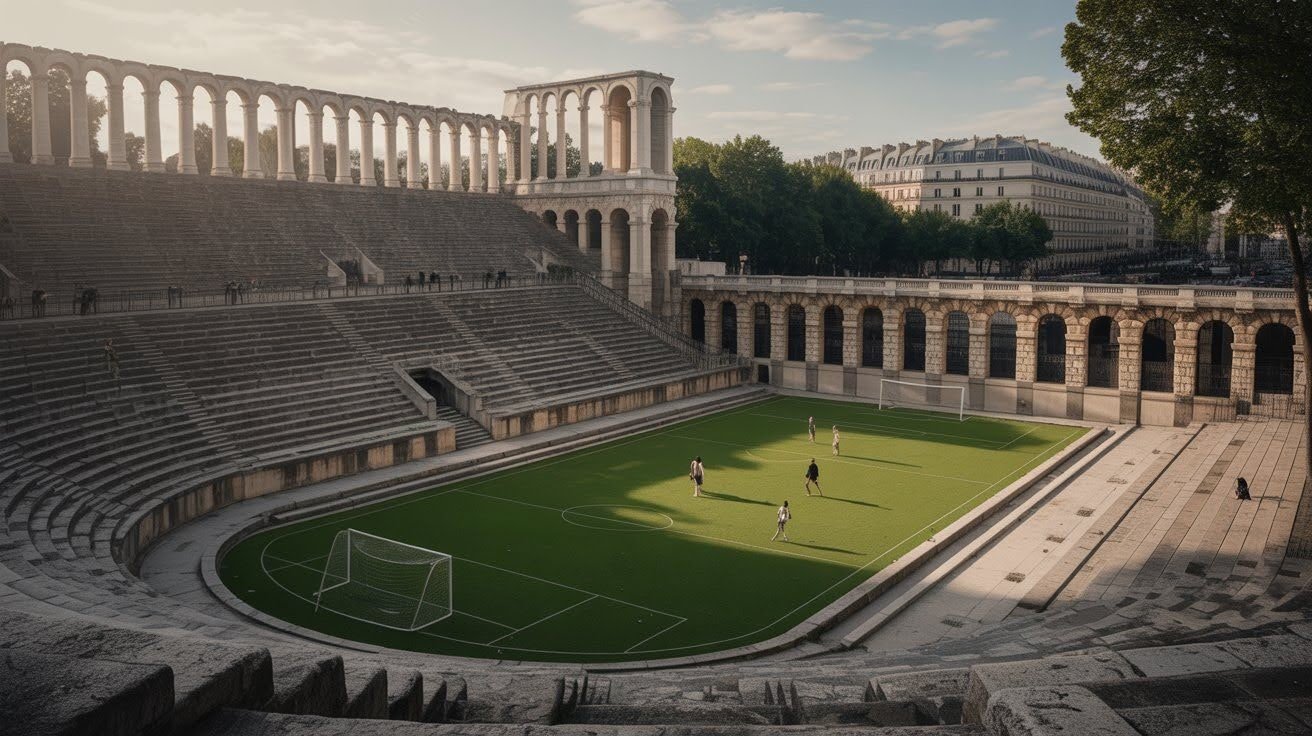
Walk through Paris today and you’re stepping on 2,000 years of history. The Romans called this place Lutetia. They left their mark in stone.
Arènes de Lutèce sits quietly in the 5th arrondissement. This ancient amphitheater once held 15,000 spectators. Gladiators fought here. Crowds cheered. Today, locals play soccer on the same ground where Romans once watched deadly games.
The arena feels different from the Colosseum in Rome. Smaller. More intimate. You can touch the original stone seats. Imagine the roar of the crowd echoing off these walls.
The Birth of Romanesque Style
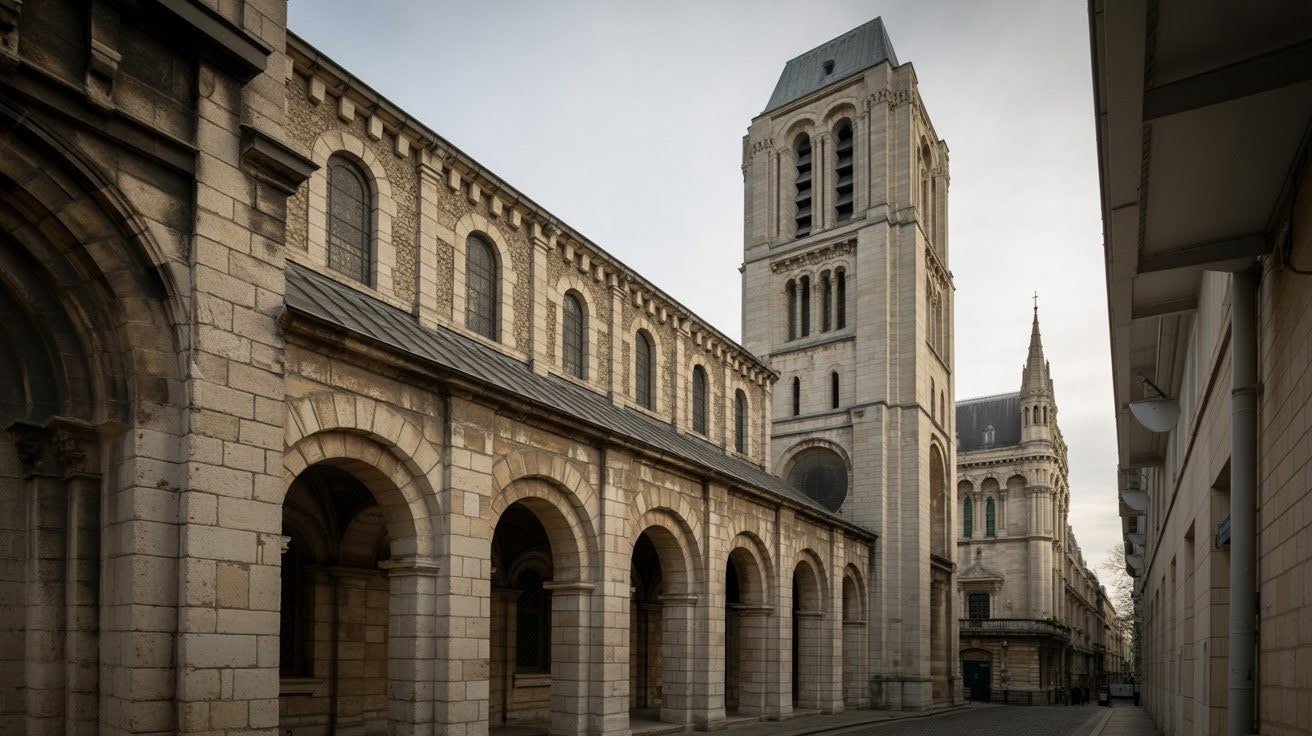
As the Roman Empire faded, new building styles emerged. The Romanesque period brought thick walls and round arches. Churches became fortresses of faith.
Saint-Germain-des-Présstands as one of Paris’s oldest churches. Founded in the 6th century, it survived Viking raids and centuries of change. The bell tower rises like a stone sentinel. Inside, the nave feels heavy and protective.
Walk around this church slowly. Notice the thick columns. See how small the windows are. Romanesque builders valued strength over light. They wanted their churches to last forever.
Basilique Saint-Denis marks a turning point in architectural history. This church bridges two worlds, the heavy Romanesque and the soaring Gothic that would define Paris.
The Rise of Gothic Grandeur
Something changed in 12th-century Paris. Builders started reaching for the sky. Heavy Romanesque walls gave way to soaring stone lace. Light flooded into sacred spaces. The Gothic age had begun.
What Makes Gothic Architecture Special
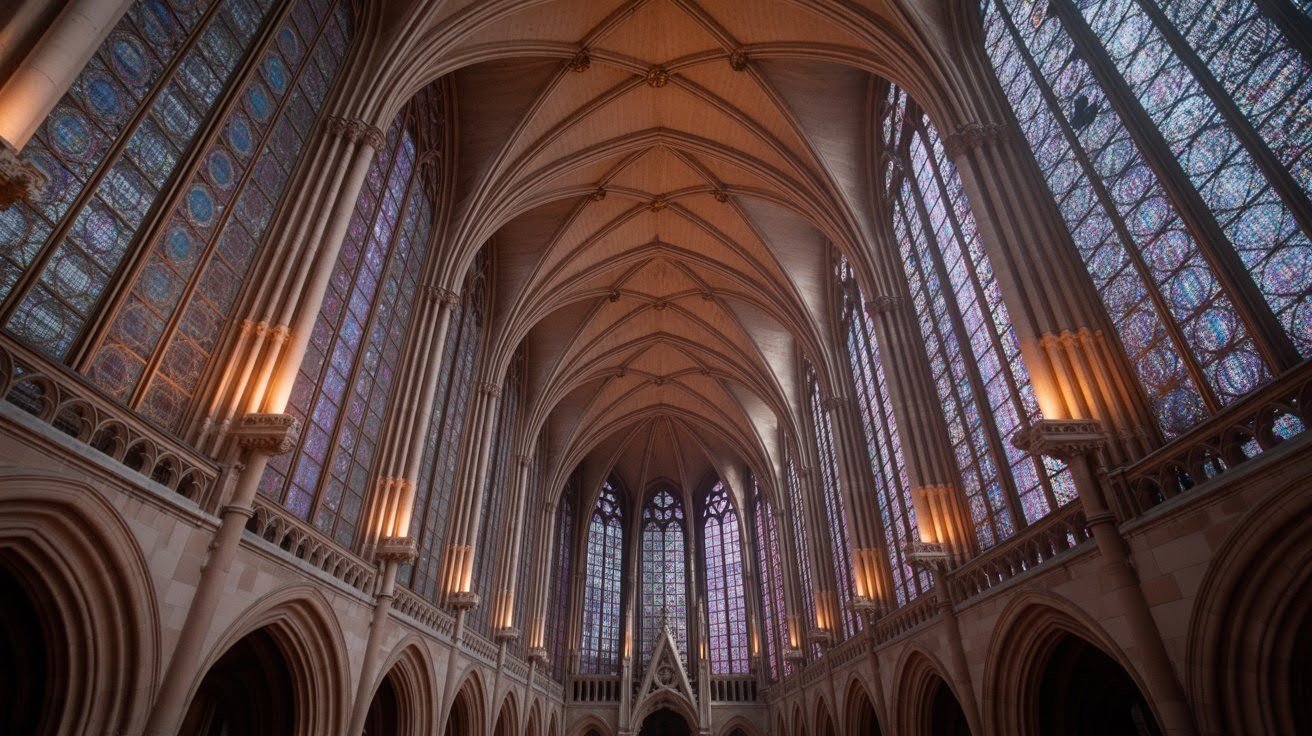
Gothic builders solved an age-old problem: how to build tall without falling down. Their secret lay in three key innovations.
Pointed arches replaced the old Roman rounds. These sharp peaks pushed weight downward instead of outward. Walls could rise higher without cracking.
Ribbed vaults spread across ceilings like stone spider webs. Each rib carried its share of the load. The spaces between could be thinner and lighter.
Flying buttresses became the real stars. These stone arms reached out from the walls, catching the building’s weight before it could topple. From the outside, they looked like frozen dancers supporting their partners.
Together, these elements created something new. Buildings that touched the clouds. Walls that dissolved into colored light.
Notre-Dame: The Gothic Heart of Paris
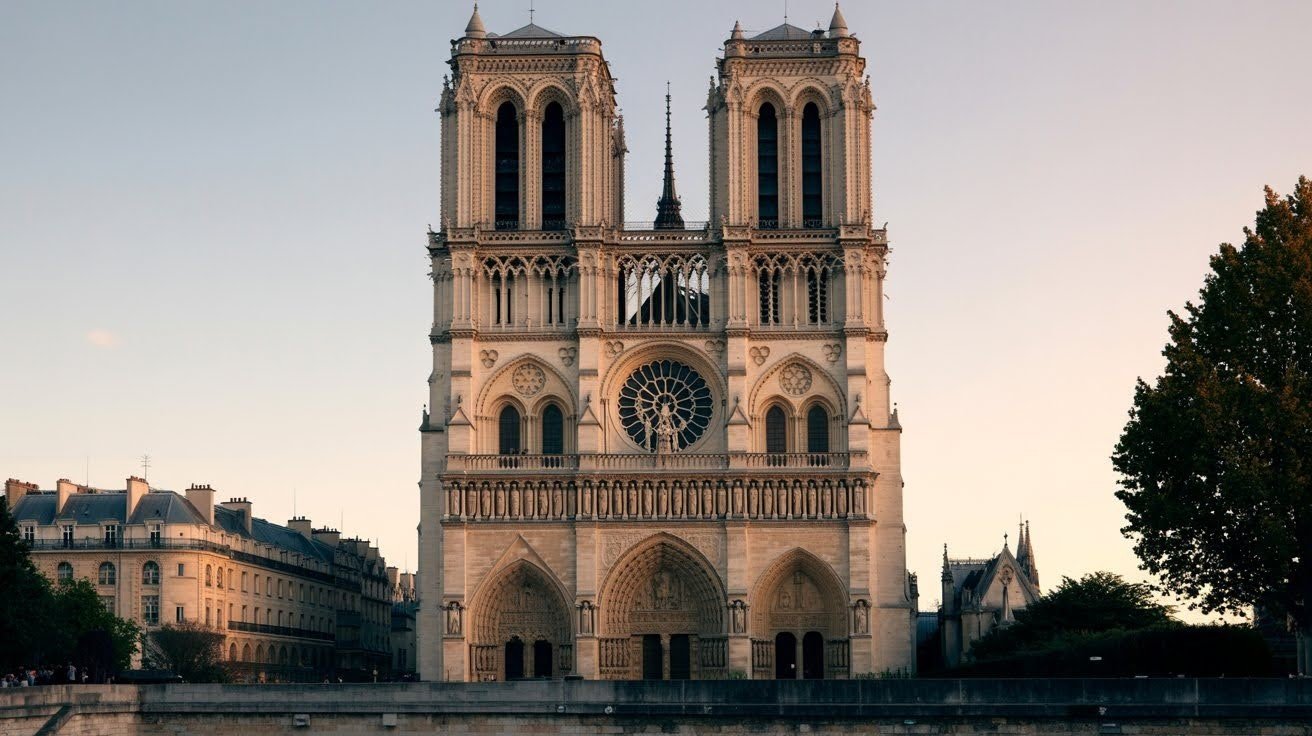
Notre-Dame de Paris stands as the city’s Gothic masterpiece. For over 850 years, it has watched over the Seine. Kings were crowned here. Revolutions raged around it. Fire nearly destroyed it in 2019.
Walk around Notre-Dame slowly. Study the western facade. Count the carved figures telling Bible stories to people who couldn’t read. Notice how the three doorways draw your eye upward to the rose window.
Inside, the nave stretches 130 meters toward the altar. Your neck cranes back naturally. Gothic architects planned this. They wanted visitors to feel small before God.
The flying buttresses outside tell their own story. Fourteen stone arms embrace the choir. Each one precise. Each one necessary. Remove any single buttress and the whole structure could collapse.
Sainte-Chapelle: A Jewel Box of Light
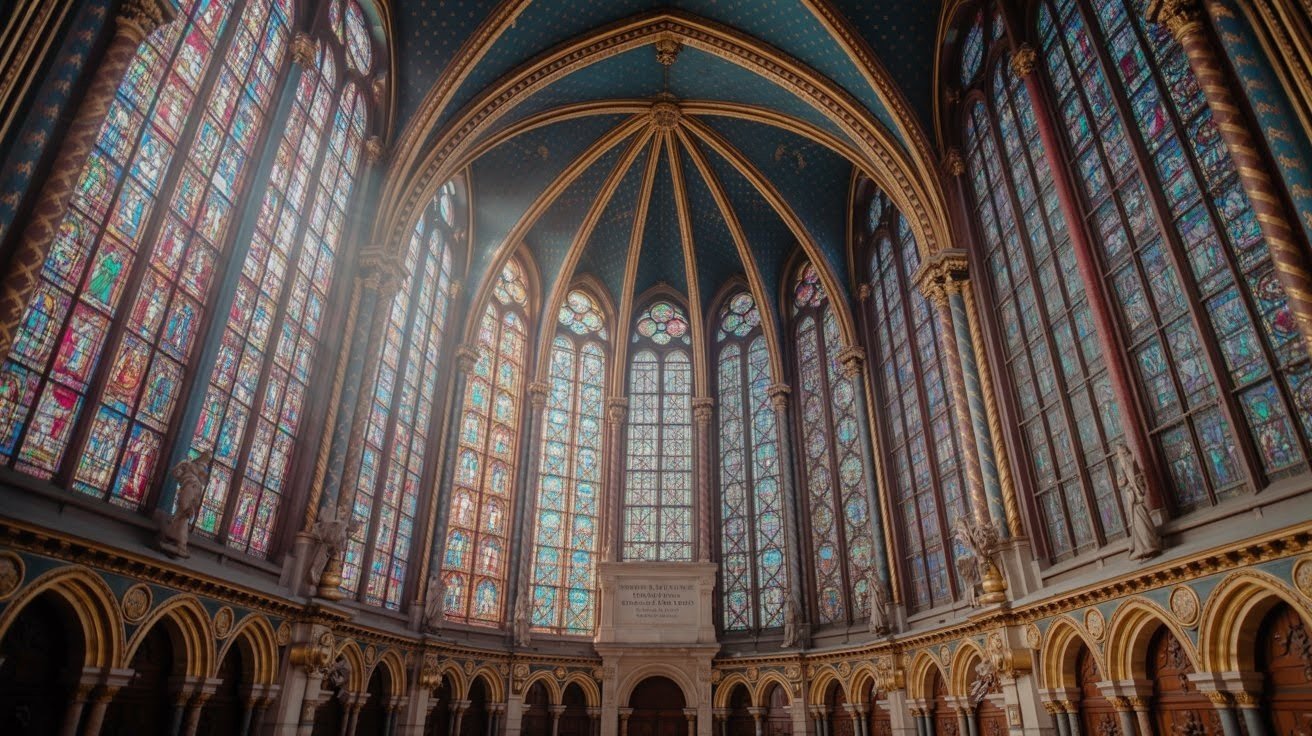
King Louis IX built Sainte-Chapelle to house his most precious relic Christ’s crown of thorns. He created a building worthy of such treasure.
Step inside the upper chapel and gasp. Walls disappear into pure color. Fifteen massive windows stretch 15 meters high. Over 1,100 scenes play out in stained glass.
This is Gothic architecture at its most daring. The walls are mostly glass. Stone serves only as a skeleton to hold the colored light. On a sunny day, the chapel glows like a giant jewel.
The builders took enormous risks here. So much glass. So little stone support. Yet it has stood for 750 years.
Late Gothic Flourishes
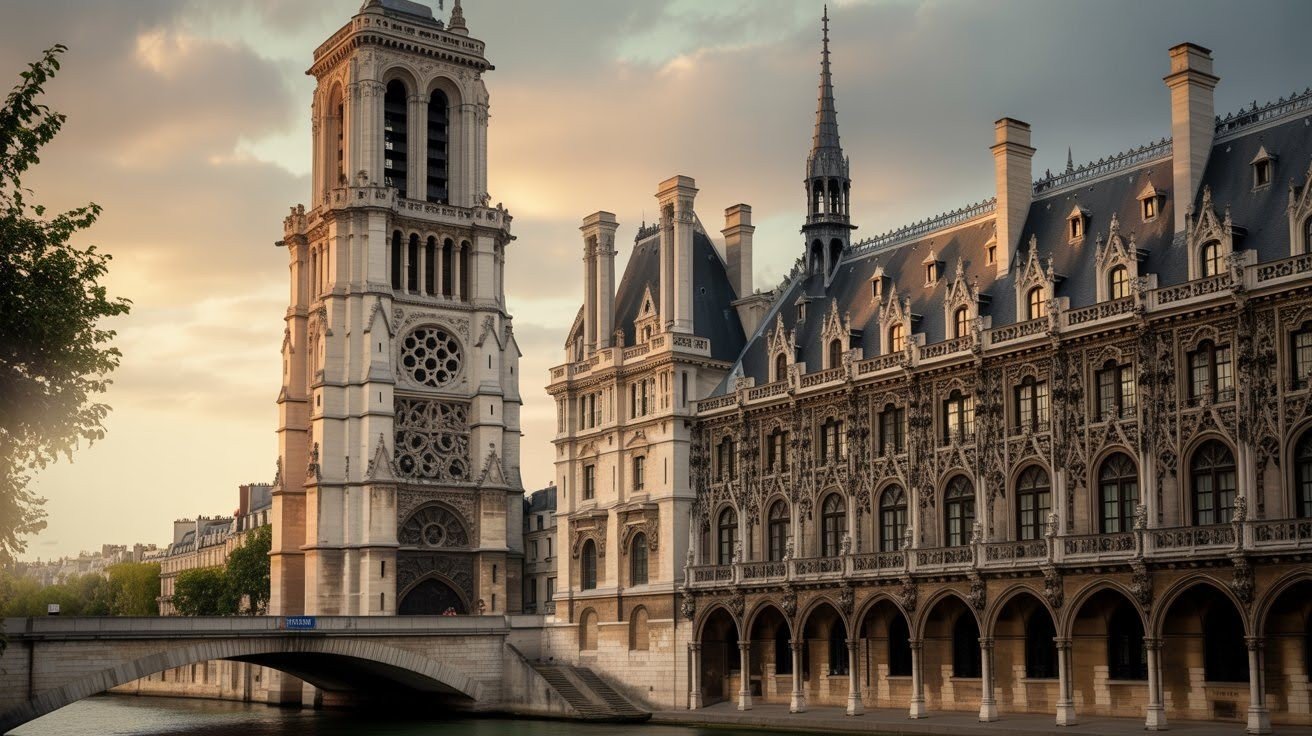
As the Gothic style matured, builders grew bolder. The late period brought Flamboyant Gothic more curves, more decoration, more drama.
La Conciergerie shows this evolution. Once a royal palace, later a prison during the Revolution, its towers still dominate the Seine’s edge. The Gothic halls inside feel almost theatrical. Pointed arches multiply into complex patterns.
Marie Antoinette spent her final months in a cell here. The Gothic walls that once sheltered kings became her prison.
Tour Saint-Jacques stands alone now, a Gothic bell tower without its church. Built in the early 1500s, it represents Flamboyant Gothic at its peak. Every surface crawls with carved decoration. Stone becomes sculpture.
Pilgrims once gathered here before walking to Santiago de Compostela. Today, the tower serves as a reminder of Gothic ambition. Even a simple bell tower could become a work of art.
Renaissance and Baroque Splendor
The medieval age was ending. Kings looked to Italy and saw something new. Renaissance ideas crossed the Alps into France. Pointed Gothic arches gave way to classical columns. Balance replaced mystery. Order conquered chaos.
Renaissance Arrives in Paris
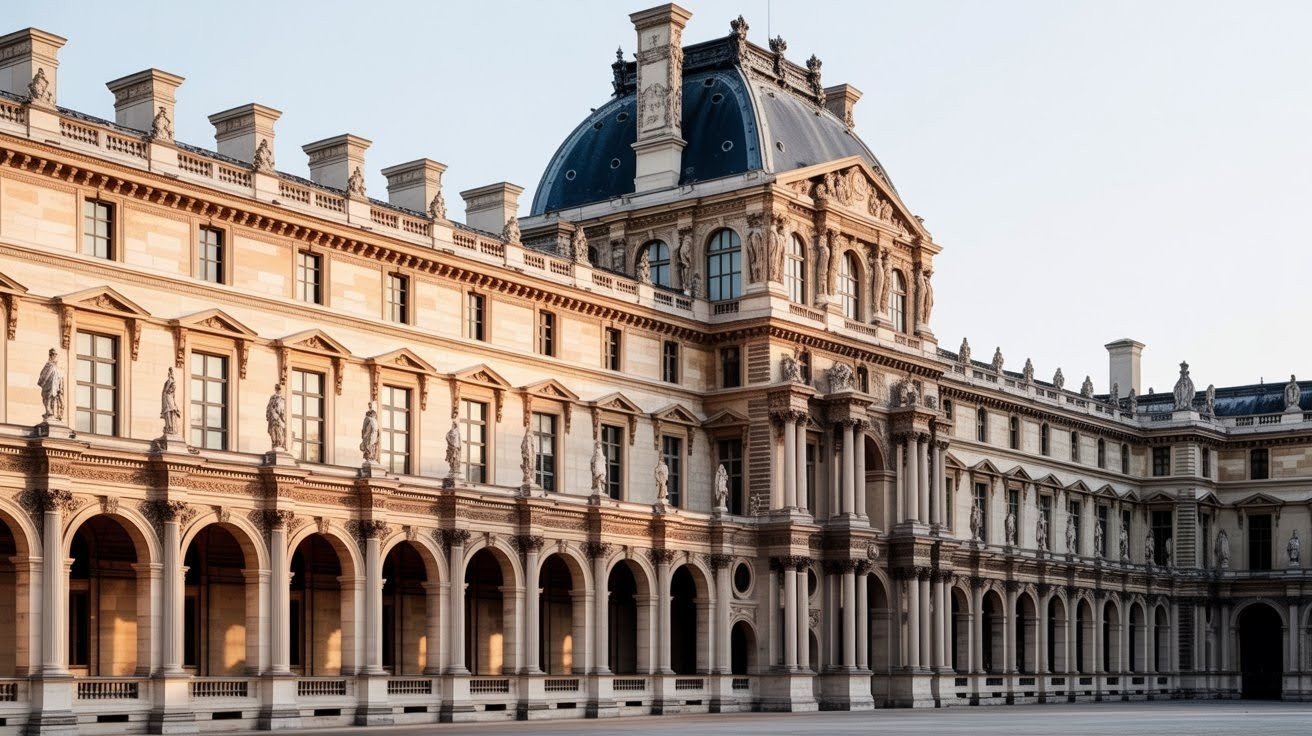
The Louvre Palace tells the story of this transformation. What started as a medieval fortress became a Renaissance palace. Then grew into the world’s largest museum.
Walk through the Louvre’s courtyards today. See how Renaissance architects thought differently than their Gothic predecessors. No more reaching for heaven. Instead, they built for human eyes and human scale.
Classical columns march in perfect rows. Windows align in straight lines. Every element balances its opposite. The Renaissance mind loved geometry. It trusted mathematics over mystery.
The Baroque Explosion
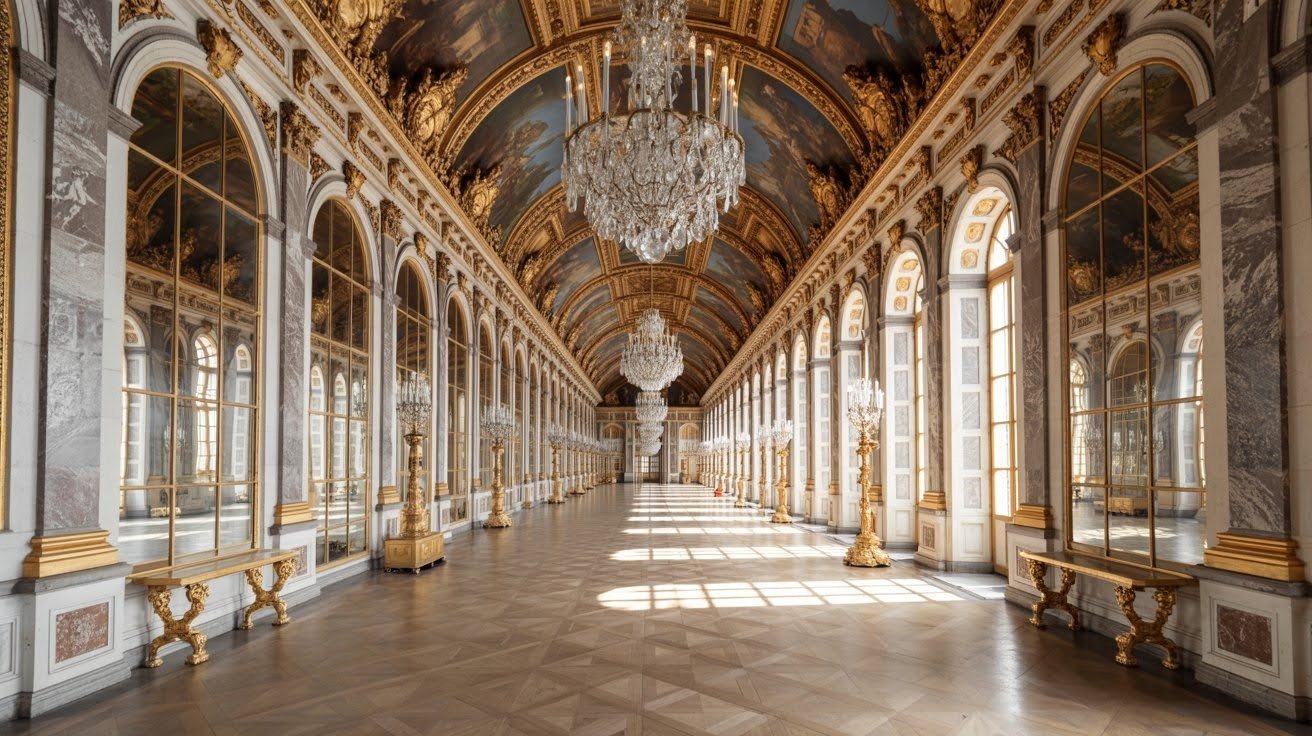
By the 1600s, French kings wanted more than balance. They craved drama. Power. Buildings that shouted royal authority across Europe.
The Palace of Versailles became their ultimate statement. Louis XIV moved his court here to escape Paris riots. He built a palace that could house 20,000 people.
Everything about Versailles overwhelms. The Hall of Mirrors stretches 73 meters long. 357 mirrors reflect 17 windows. On sunny days, light bounces everywhere. Visitors squint and stumble, dazzled by brilliance.
This was the point. Louis XIV wanted foreign ambassadors to feel small. Humbled. The Sun King’s palace made mere mortals seem like insects.
Urban Theater: The Great Squares
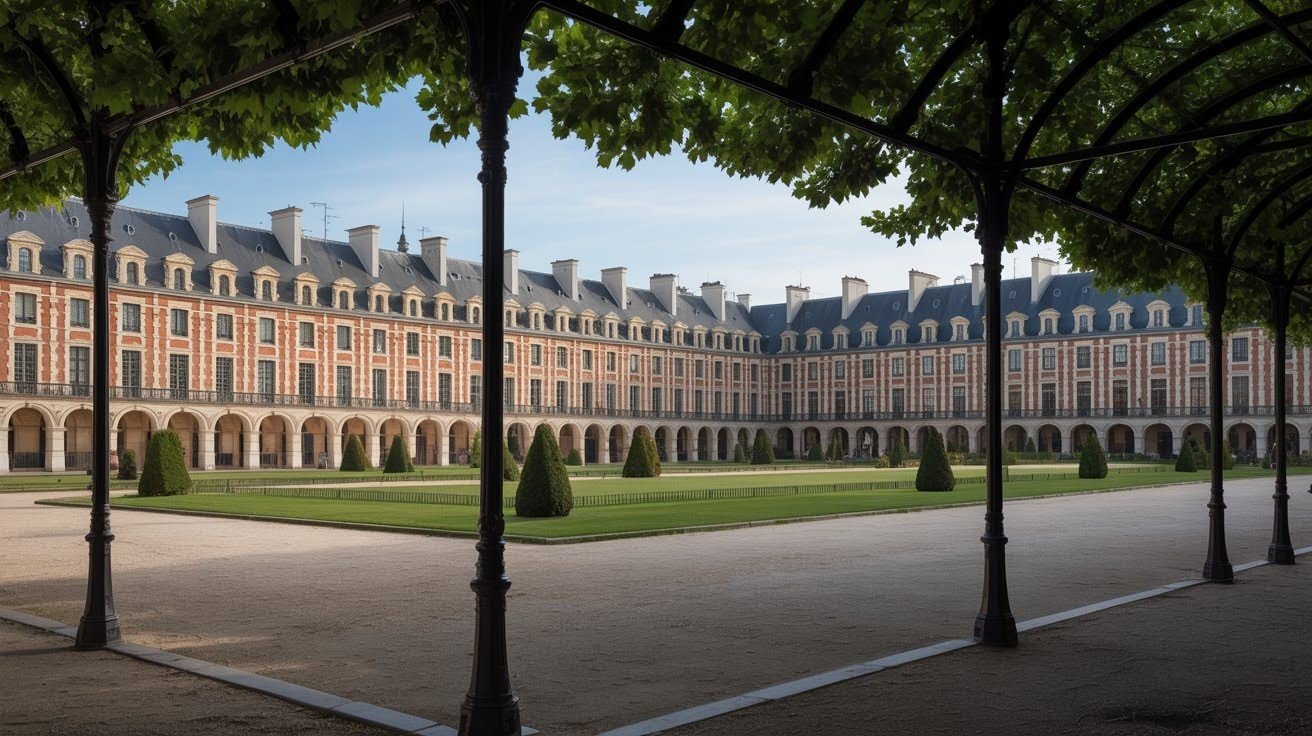
Baroque thinking extended beyond palaces. Kings realized cities themselves could display royal power. Public squares became outdoor theaters.
Place des Vosges pioneered this idea. Henri IV commissioned it in 1605. Thirty-six identical buildings surround a perfect rectangle. Red brick and white stone create a rhythm. Covered arcades provide shelter.
This was revolutionary urban planning. Before, Paris streets twisted randomly. Medieval builders followed cow paths. Henri IV imposed order on chaos.
Stand in the center of Place des Vosges. Turn in a slow circle. Every view looks identical. No building breaks ranks. The harmony feels almost musical.
The Human Scale of Grandeur
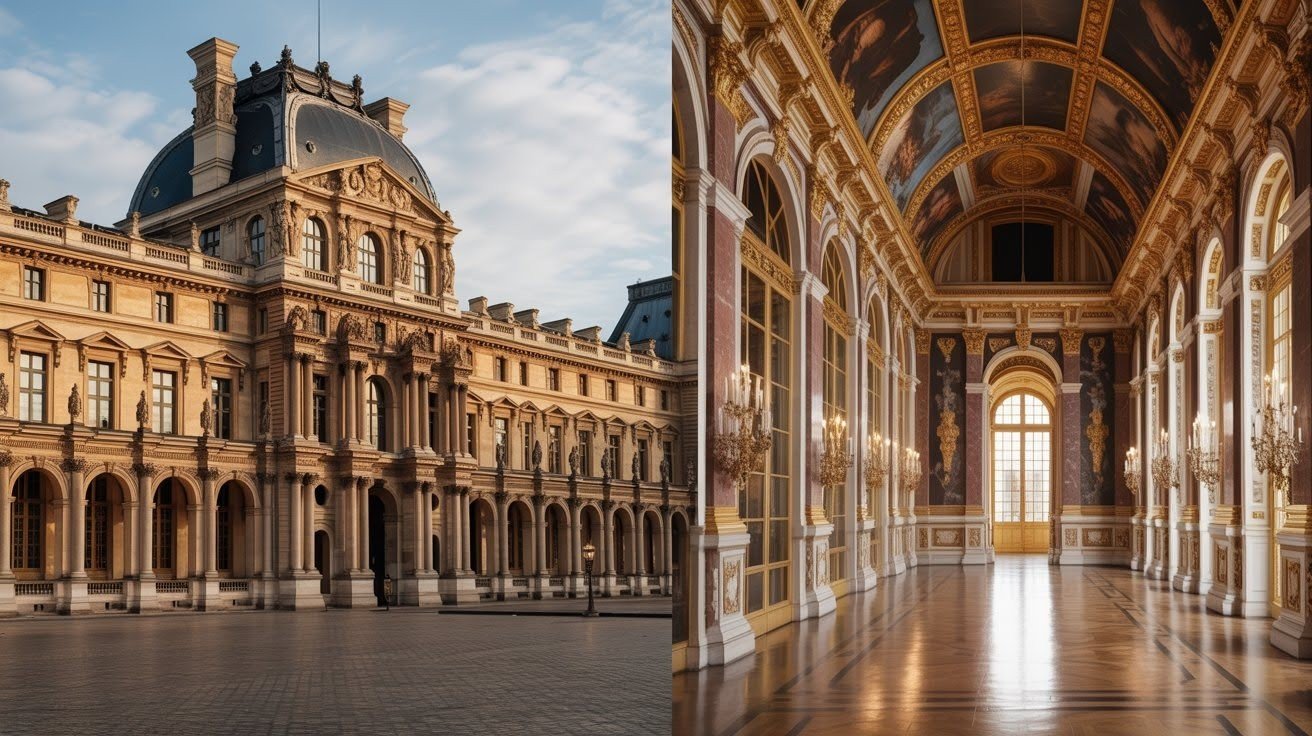
Renaissance and Baroque architecture changed how Parisians lived. Gothic buildings served God. These new styles served earthly power.
The Louvre taught kings to see themselves as enlightened rulers. Classical references connected them to ancient Rome. Symmetry suggested divine order guided their decisions.
Versailles became a machine for manufacturing royal authority. Every duke, every ambassador, every visiting dignitary walked through rooms designed to impress. Architecture became diplomacy by other means.
Breaking Conventions: Art Nouveau to Modernism
By 1900, Paris had grown tired of copying the past. Gothic revivals. Neoclassical temples. Baroque palaces. Young architects wanted something new. Something that belonged to their industrial age.
Three movements would shake Paris architecture to its foundations. Each rebelled against what came before. Each imagined how modern people should live.
Nature Blooms in Iron and Glass
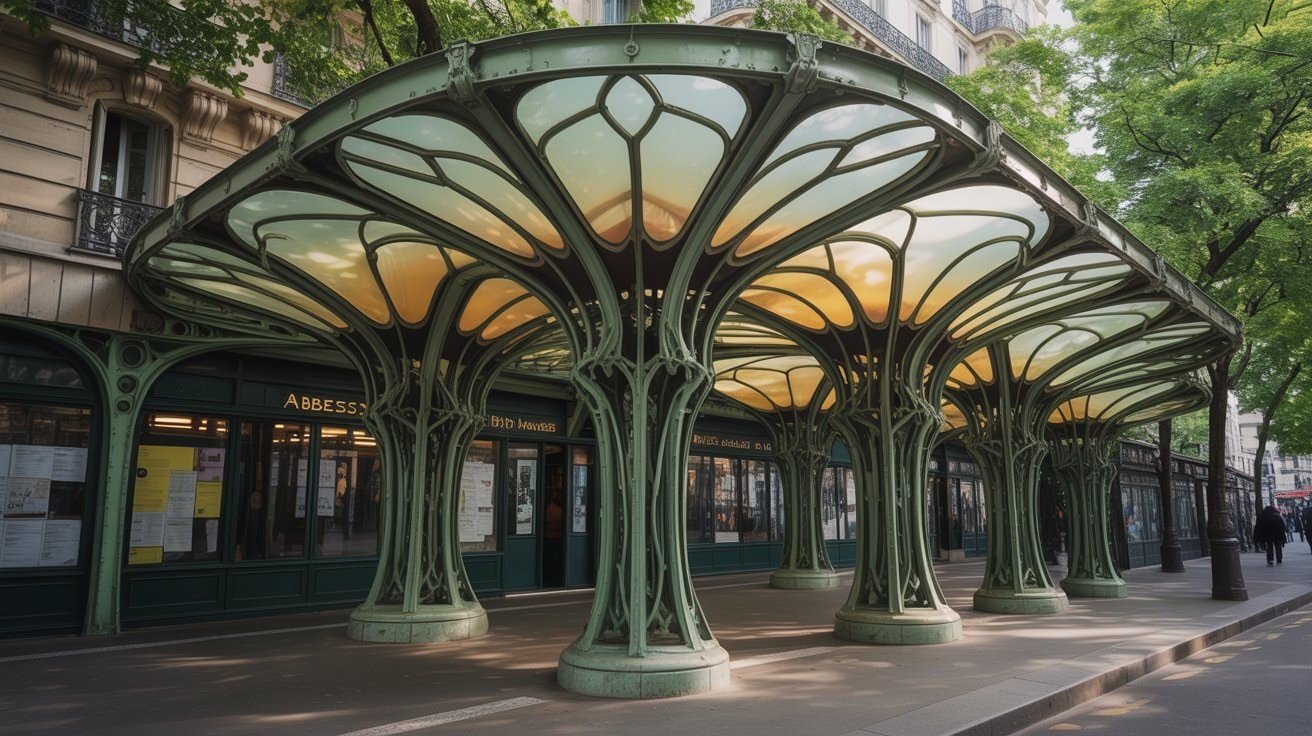
Art Nouveau burst onto Paris like spring after a long winter. Architects looked away from ancient Rome and toward the natural world. Why copy temple columns when you could grow iron stems? Why build straight lines when life moved in curves?
Hector Guimard became the master of this new language. His Metro entrances still welcome millions into Paris’s underground. Stand before any surviving Guimard entrance and see his revolution in action.
Iron bends like plant stems reaching for sunlight. Glass panels glow like flower petals. The metal itself seems alive twisting, growing, blooming from the sidewalk.
At Abbesses station, Guimard’s canopy spreads like a giant mushroom. The green iron frame supports amber glass panels. Light filters through as if you’re standing under forest leaves.
Luxury Meets the Machine Age
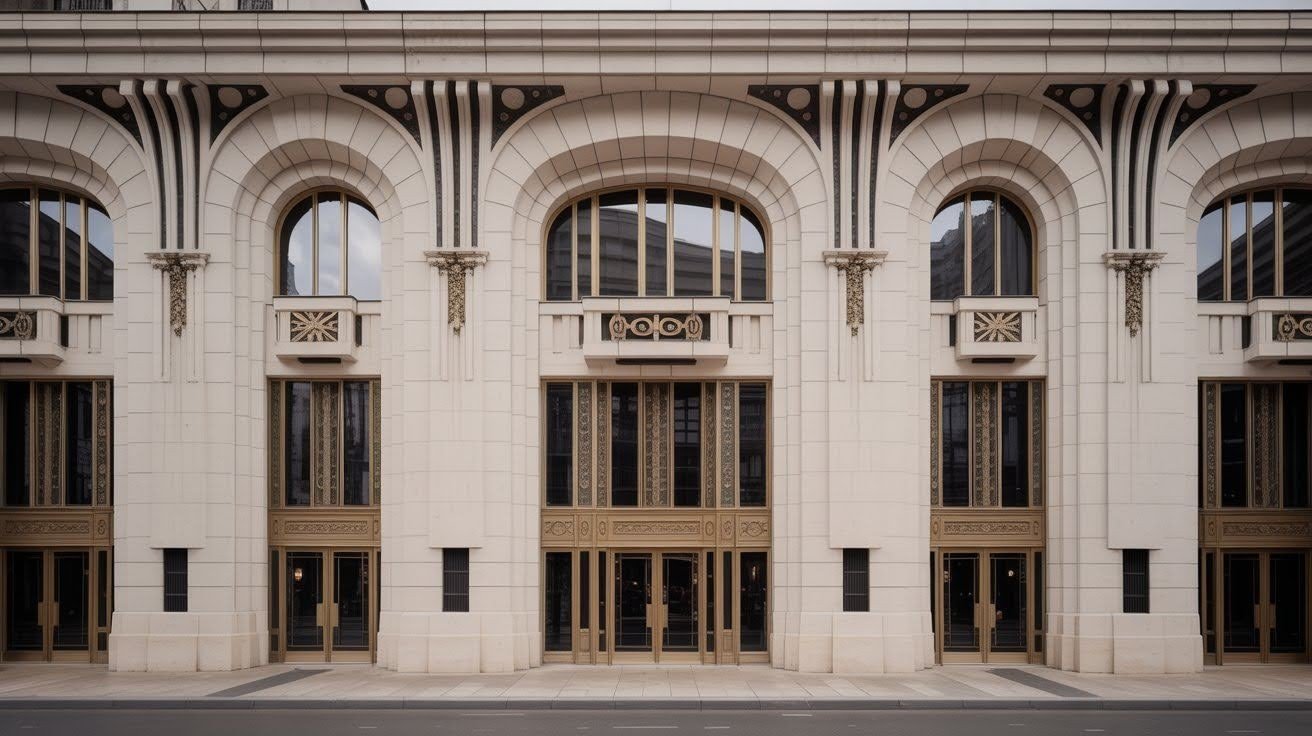
By the 1920s, the world had changed again. World War I had ended. Jazz music filled nightclubs. Women wore shorter skirts and drove automobiles. Architecture needed to catch up with modern life.
Art Déco provided the answer. This style loved machines as much as Art Nouveau had loved flowers. But it dressed industrial power in luxury fabrics.
Théâtre des Champs-Élysées shows Art Déco at its most refined. Auguste Perret built it from reinforced concrete a revolutionary material. But he covered that concrete in marble and bronze.
The Machine for Living
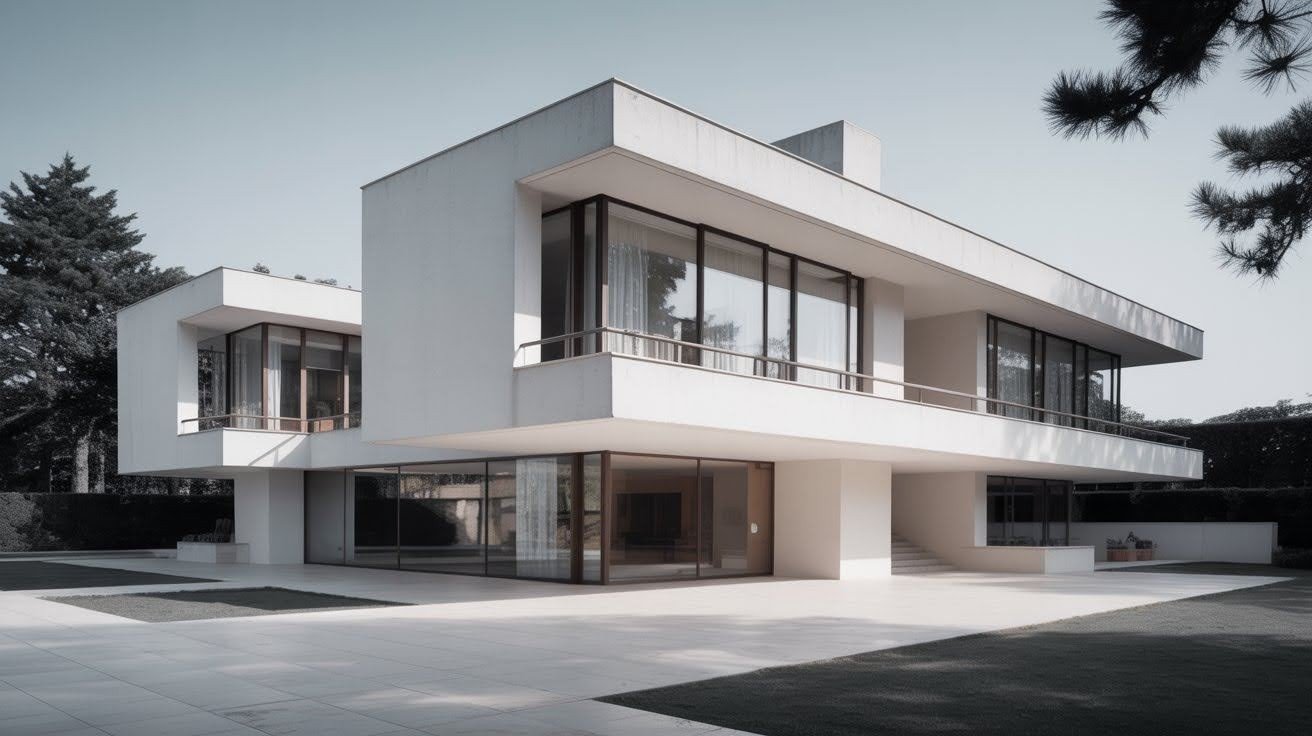
After World War II, architects grew impatient with decoration entirely. The world needed rebuilding. Housing shortages demanded solutions. Beauty seemed like a luxury society couldn’t afford.
Le Corbusier led this revolution toward pure function. He called his buildings “machines for living.” Every element should serve a purpose. Anything else was waste.
Villa La Roche in the 16th arrondissement shows his radical thinking. Built in 1925, it looks like nothing Paris had seen before.
Three Visions of Modern Life
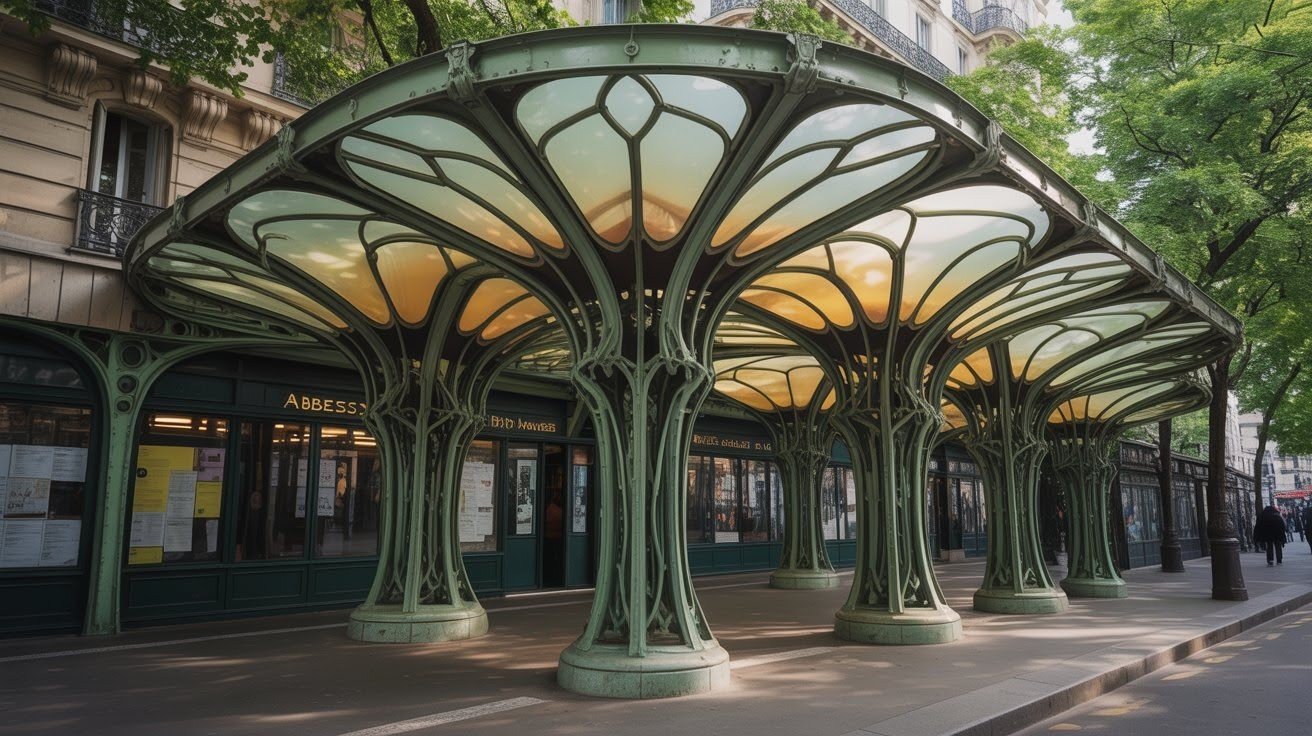
These three movements told different stories about how modern people should live.
Art Nouveau said we should stay connected to nature. Even in an industrial city, buildings could bloom like flowers. Beauty came from following natural patterns.
Art Déco embraced the machine age but refused to abandon luxury. Modern life could be both efficient and glamorous. Industry could serve art.
Modernism stripped away everything but function. In a world facing housing crises and war, decoration felt selfish. Architecture should solve problems, not create pretty pictures.
Conclusion
Paris stands as the world’s greatest outdoor museum of building styles. Every street corner tells a story. Roman stones support Gothic spires. Haussmann’s boulevards frame Art Nouveau Metro entrances. Medieval churches neighbor modernist apartments.
This layered history makes Paris architecture unforgettable. Each era left its mark without erasing what came before. The city embraced change while honoring its past.
Now it’s your turn to explore. Look up as you walk. Notice details others miss. Touch ancient stones. Count Gothic arches. Trace Art Déco patterns with your eyes.
Paris rewards curious observers. The more you look, the more you’ll see. Architecture becomes your guide through centuries of human creativity and ambition.
Frequently Asked Questions
What are the main architectural styles found in Paris?
Paris features Haussmannian, Gothic, Art Nouveau, Art Deco, and modern contemporary styles throughout the city. Each period reflects different historical influences and urban planning approaches that shaped the capital.
When was most of Haussmannian Paris built?
Baron Haussmann’s major renovations occurred between 1853-1870 under Napoleon III’s reign. This period created the wide boulevards, uniform building heights, and cream-colored limestone facades that define central Paris today.
Where can I see the best examples of Gothic architecture in Paris?
Notre-Dame Cathedral and Sainte-Chapelle showcase prime Gothic features like flying buttresses and rose windows. The Saint-Denis Basilica north of Paris also contains important early Gothic innovations worth visiting.
How do I identify Art Nouveau buildings while walking through Paris?
Look for curved lines, floral motifs, decorative ironwork, and organic shapes on building facades. The best examples appear in the 16th arrondissement and around Métro stations designed by Hector Guimard.
What architectural periods influenced modern Parisian construction?
Contemporary Paris blends historical preservation with modern glass and steel structures. Recent developments incorporate sustainable design while respecting the city’s classical proportions and neighborhood character.


